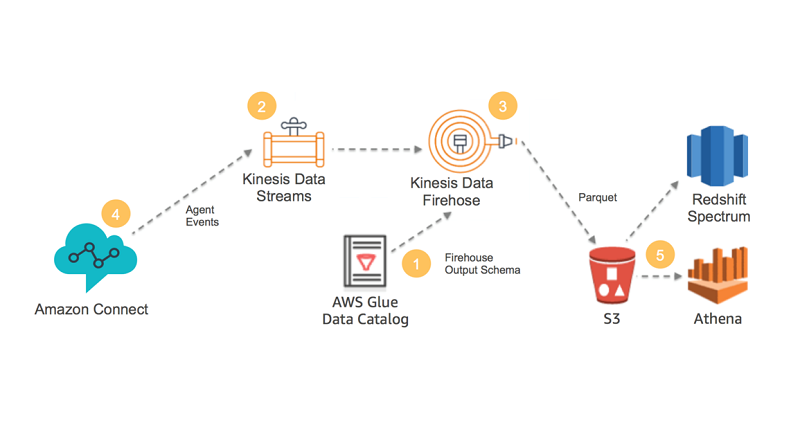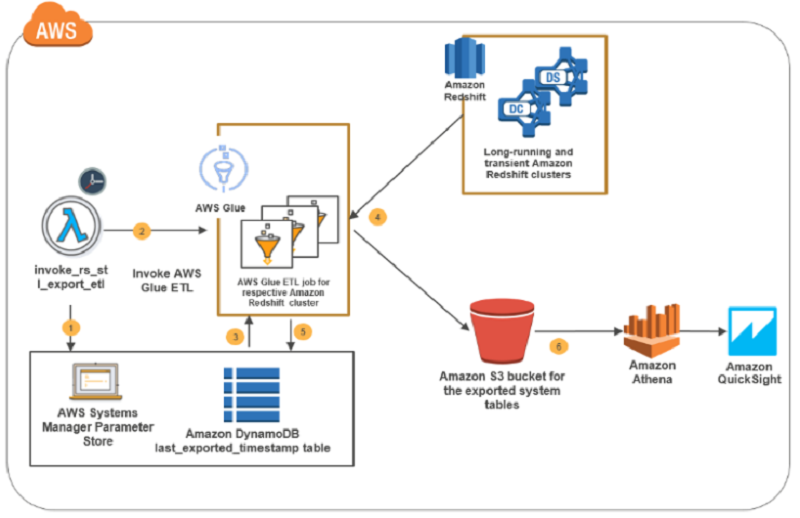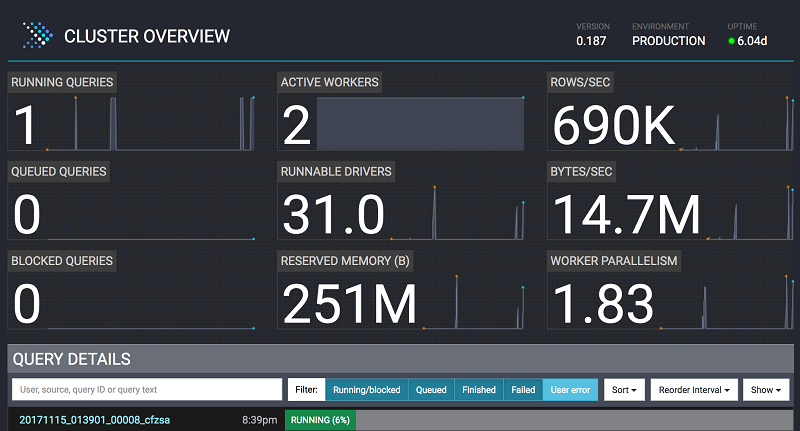AWS Big Data Blog
Category: AWS Glue
Orchestrate multiple ETL jobs using AWS Step Functions and AWS Lambda
In this post, I show you how to use AWS Step Functions and AWS Lambda for orchestrating multiple ETL jobs involving a diverse set of technologies in an arbitrarily-complex ETL workflow.
Analyze Apache Parquet optimized data using Amazon Kinesis Data Firehose, Amazon Athena, and Amazon Redshift
Kinesis Data Firehose can now save data to Amazon S3 in Apache Parquet or Apache ORC format. These are optimized columnar formats that are highly recommended for best performance and cost-savings when querying data in S3. This feature directly benefits you if you use Amazon Athena, Amazon Redshift, AWS Glue, Amazon EMR, or any other big data tools that are available from the AWS Partner Network and through the open-source community.
Use AWS Glue to run ETL jobs against non-native JDBC data sources
In this post, we demonstrate how to connect to data sources that are not natively supported in AWS Glue today. We walk through connecting to and running ETL jobs against two such data sources, IBM DB2 and SAP Sybase.
Implement continuous integration and delivery of serverless AWS Glue ETL applications using AWS Developer Tools
In this post, I walk you through a solution that implements a CI/CD pipeline for serverless AWS Glue ETL applications supported by AWS Developer Tools (including AWS CodePipeline, AWS CodeCommit, and AWS CodeBuild) and AWS CloudFormation.
Work with partitioned data in AWS Glue
In this post, we show you how to efficiently process partitioned datasets using AWS Glue. First, we cover how to set up a crawler to automatically scan your partitioned dataset and create a table and partitions in the AWS Glue Data Catalog. Then, we introduce some features of the AWS Glue ETL library for working with partitioned data.
How to retain system tables’ data spanning multiple Amazon Redshift clusters and run cross-cluster diagnostic queries
In this blog post, I present a solution that exports system tables from multiple Amazon Redshift clusters into an Amazon S3 bucket. This solution is serverless, and you can schedule it as frequently as every five minutes. The AWS CloudFormation deployment template that I provide automates the solution setup in your environment. The system tables’ data in the Amazon S3 bucket is partitioned by cluster name and query execution date to enable efficient joins in cross-cluster diagnostic queries.
Easily manage table metadata for Presto running on Amazon EMR using the AWS Glue Data Catalog
In this post, we will explore how the AWS Glue Data Catalog addresses discoverability and manageability for table metadata for Presto on Amazon EMR.
AWS Glue Now Supports Scala Scripts
We are excited to announce AWS Glue support for running ETL (extract, transform, and load) scripts in Scala. Scala lovers can rejoice because they now have one more powerful tool in their arsenal.
Simplify Querying Nested JSON with the AWS Glue Relationalize Transform
AWS Glue has a transform called Relationalize that simplifies the extract, transform, load (ETL) process by converting nested JSON into columns that you can easily import into relational databases. Relationalize transforms the nested JSON into key-value pairs at the outermost level of the JSON document. The transformed data maintains a list of the original keys from the nested JSON separated by periods. Let’s look at how Relationalize can help you with a sample use case.
Using Amazon Redshift Spectrum, Amazon Athena, and AWS Glue with Node.js in Production
This is a guest post by Rafi Ton, founder and CEO of NUVIAD. The ability to provide fresh, up-to-the-minute data to our customers and partners was always a main goal with our platform. We saw other solutions provide data that was a few hours old, but this was not good enough for us. We insisted on providing the freshest data possible. For us, that meant loading Amazon Redshift in frequent micro batches and allowing our customers to query Amazon Redshift directly to get results in near real time. The benefits were immediately evident. Our customers could see how their campaigns performed faster than with other solutions, and react sooner to the ever-changing media supply pricing and availability. They were very happy.









